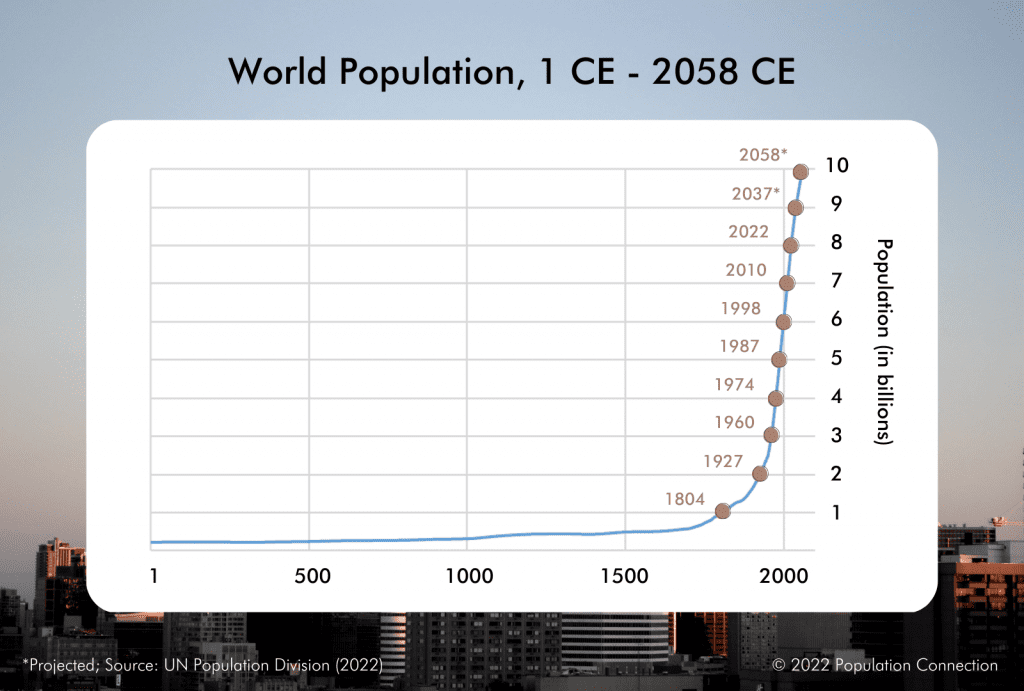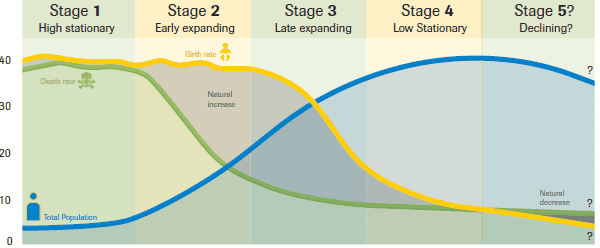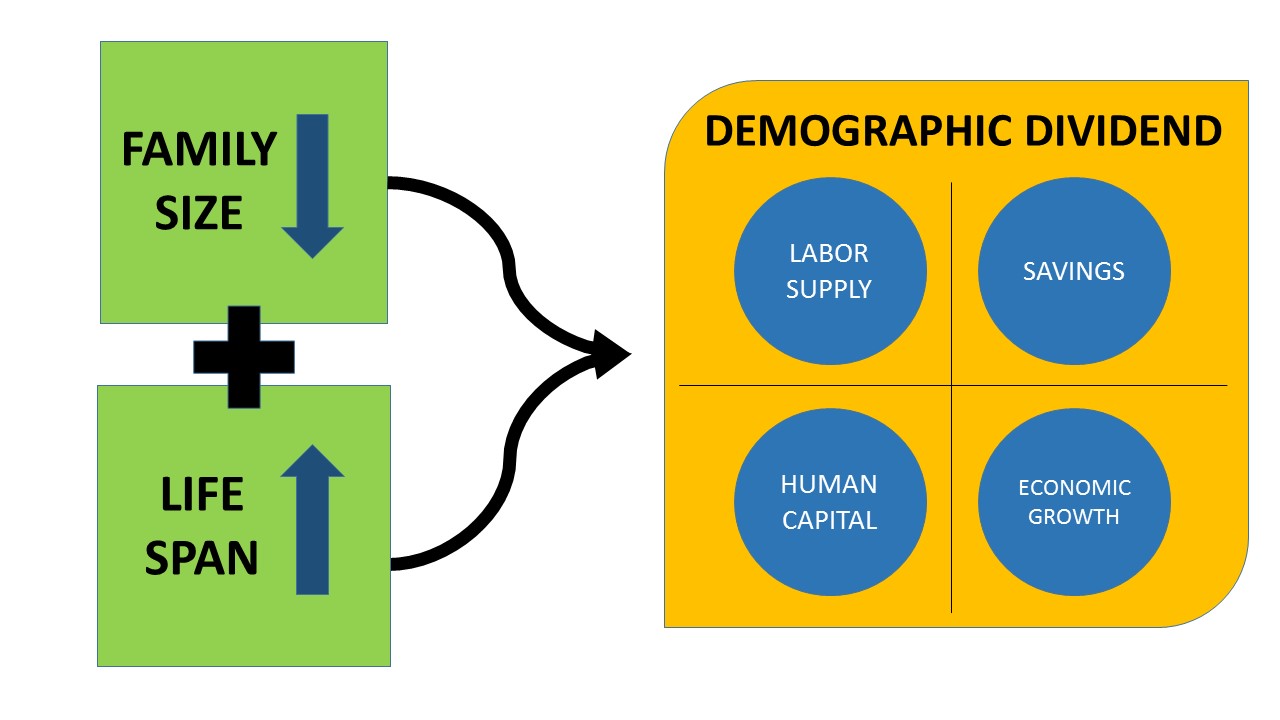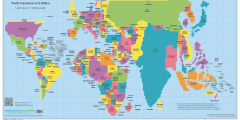The following charts and articles provide background information on population dynamics and explanations of demographic terms and theories.
J-Curve of Human Population Growth
 Graph of population growth over time, illustrating the exponential growth of humans from 1 C.E. to the present.
Graph of population growth over time, illustrating the exponential growth of humans from 1 C.E. to the present.
World Population History Chart
Table showing statistical milestones in the history of human population growth. Provides the year marks for when we reached each additional billion and the years elapsed since the previous billion.
What is the Demographic Transition Model?
 A six-part blog series on the Demographic Transition Model that includes an overview of the DTM along with an in-depth explanation of each stage and a real-world example.
A six-part blog series on the Demographic Transition Model that includes an overview of the DTM along with an in-depth explanation of each stage and a real-world example.
What is the Demographic Dividend?
 Because of a change in age distribution, fewer investments are needed to meet the needs of the youngest age groups and resources are freed up for what is called the “economic gift.” This means that the labor force is growing more rapidly than the population that is dependent on it.
Because of a change in age distribution, fewer investments are needed to meet the needs of the youngest age groups and resources are freed up for what is called the “economic gift.” This means that the labor force is growing more rapidly than the population that is dependent on it.
What is Zero Population Growth, or ZPG?
Zero population growth (ZPG) is a basic demographic term that is important for students to understand during a population unit. Fortunately, the term’s definition is not too far off from its name!
What is Birth Rate and Death Rate?
There are two statistics that are fundamental in the study demography – birth rate and death rate. It is essential for students to have a working knowledge of these two figures, as they serve as the building blocks for understanding more complex population concepts like growth rate, doubling time, and more.
Ask PopEd: 14 Commonly-Asked Questions and Myths About Population Growth
Does an annual growth rate of 1 or 2 percent really matter? What role does religion play in population issues? Could the entire world population fit inside the borders of Texas? Find the answers to these and other common population questions.






